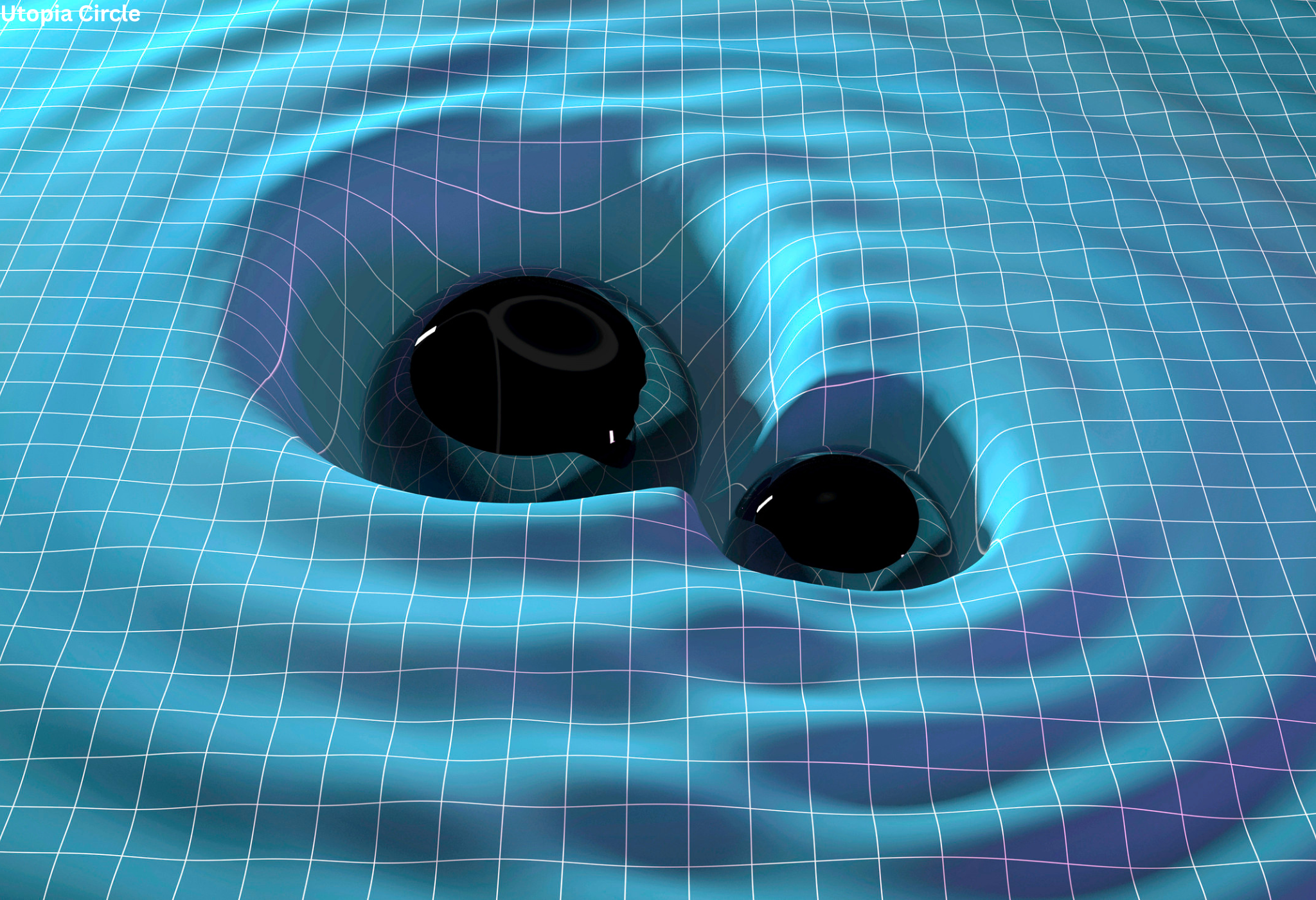Utopia Circle Edition:
Imagine you’re looking at a distant streetlight through the bottom of a wine glass. The curved glass bends the light, making the streetlight appear distorted, magnified, or even split into multiple images. Now, what if I told you that massive objects in space do exactly the same thing to starlight? This cosmic phenomenon is called gravitational lensing, and it’s one of the most beautiful confirmations of Einstein’s theory of relativity.
The Science Behind the Magic
Einstein’s Revolutionary Idea
In 1915, Albert Einstein proposed something radical: massive objects don’t just attract other objects with gravity—they actually bend the fabric of space and time itself. Think of space-time like a stretched rubber sheet. When you place a bowling ball (a massive star) on this sheet, it creates a depression. Now, if you roll a marble (light) across the sheet, it will curve around the bowling ball’s depression rather than traveling in a straight line.
Why Light Bends
Light always travels in straight lines through space, but when space itself is curved by gravity, light follows that curve. It’s like a train following railroad tracks—even if the tracks curve, the train is still going “straight” relative to the tracks.
Types of Gravitational Lensing
Strong Lensing:
Real-Life Analogy: Remember those funhouse mirrors at carnivals that make you look tall, short, or wavy? Strong gravitational lensing works similarly.
What Happens: When a very massive object (like a galaxy cluster) sits almost directly between us and a distant galaxy, it can create dramatic effects:
Einstein Rings: Perfect circles of light around the lensing object
Multiple Images: The same distant galaxy appears 2, 3, or even 4 times around the lens
Giant Arcs: Stretched, curved images of background galaxies
Weak Lensing:
Real-Life Analogy: Imagine looking at your reflection in a slightly warped bathroom mirror. You might not notice it immediately, but your reflection is subtly stretched or compressed.
What Happens: Distant galaxies appear slightly elongated or stretched in a preferred direction. Individual distortions are barely noticeable, but when astronomers study thousands of galaxies, clear patterns emerge.
Scientific Impact: This technique has revealed the distribution of dark matter across the universe—matter we can’t see directly but can detect through its gravitational effects.
Microlensing
Real-Life Analogy: Picture a person walking between you and a streetlight. As they pass in front of the light, they briefly block it, but if they were carrying a magnifying glass, they might actually make the light appear brighter for a moment.
What Happens: When a star passes between us and a more distant star, the closer star’s gravity acts like a lens, briefly magnifying the distant star’s light.
Amazing Discovery: This technique has helped discover thousands of exoplanets! When a planet orbits the lensing star, it creates a characteristic “blip” in the brightness curve.
Try this at Home
The Wine Glass Experiment: Fill a wine glass with water and look at a text through it. Notice how the letters appear magnified and distorted. This is essentially what gravitational lensing does to distant galaxies, but with gravity instead of glass and water.
The Magnifying Glass Analogy: Hold a magnifying glass between your eye and a distant object. Move the magnifying glass closer to and farther from your eye. Notice how the image changes size and can even flip upside down. Gravitational lenses work similarly, but the “magnifying glass” is made of curved space-time.

From UtopiaCircle
Gravitational lensing transforms massive objects throughout the universe into natural telescopes, allowing us to peer deeper into space and further back in time than would otherwise be possible. It’s revealed the existence of dark matter, helped us find distant planets, and continues to unlock secrets about the fundamental nature of our universe.
Every time you look through a magnifying glass or see light bending through water, remember that gravity is performing the same optical magic on a cosmic scale, helping us explore the furthest reaches of space and time. In a very real sense, the universe is using its own gravity to help us understand itself—a cosmic collaboration billions of years in the making.



Pingback: Einstein Rings » The Learning Hub